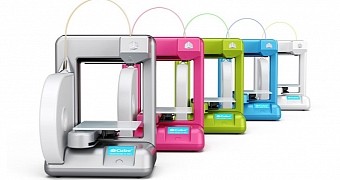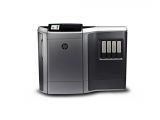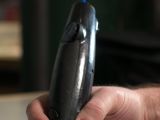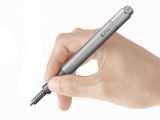Fused Deposition Modeling is the most widespread form of 3D printing technology, and with good reason, but that reason, or those reasons since there are more than one, will probably disappear in a year or so.
Because of that, I foresee a time when very few people will use FDM printers compared to today. Even if it doesn't come as quickly as I think, it will come for certain.
It might be a bit of a stretch to say so, but there is more than one alternative method already in use, albeit by many fewer people in comparison. And I'm not just talking about stereolithography.
Then again, SLA is the biggest challenger for FDM, or will be once more companies launch cheap desktop 3D printers based on it.
FDM technology and why it won't last
Fused Deposition Modeling works by forcing filament (usually plastic) through a superheated extruder, allowing the nozzle to build items drop by drop, layer by layer.
The reason this technique was the first and is the most popular 3D printing method in the world is the low cost of implementation, and the ease of filament distribution.
FDM printers have also gotten better at reducing the layer thickness in recent months, so that not everything turns out horribly wrinkled or ridged. Post-processing (polishing) is still mostly required though.
SLS (selective laser sintering) probably won't ever challenge the spot that FDM has carved for itself, especially in metal-based implementations (which cost a fortune).
SLA, however, works by curing fluid resin (of the photosensitive type) by exposing it to ultraviolet light. Until recently, it was a lot more expensive than FDM, so there wasn't much overlap.
However, the portable $189 / €189 iBox Nano cannot be ignored, and even the best SLA printers on the market now cost less than twenty grand instead of fifty.
Then there are all those other additive manufacturing technologies, like Slide-And-Separate (SAS, SLA with UV-LED lights) and HP's very cheap but precise Multi Jet Fusion.
No matter how you look at it, FDM is in a rut
Depending on how quick SLA, MFP or even inkjet printing techniques take off, they could totally sideline FDM printing by this time next year. Or at least by the end of the decade, though I doubt it will take so long.
FDM could buy itself some time by focusing on multi-color or full-color printing solutions, but it's only a matter of time before someone figures out how to give that ability to SLA. Even then, inkjet printing already has that well in hand.
It could lead to a landscape where FDM is only used in 3D printing pens, but there already are a couple of SLA-based ones, so that might not happen either.
All in all, fused deposition modeling may end up as the industrial equivalent of a nine days' wonder (just swap “days” for “years”).
While that's going on, other printing processes could use the chance to gain a bit of recognition. I'm still impressed by that paper-based technology that uses inkjet printing to give objects full colors. You can literally use it to print oranges, fully covered both inside and out.
The only area where FDM printing might thrive is that of food. You can't really adapt SLA, SLS or inkjet printing for food printing. Extruder-based systems will probably become the method of choice for people who don't feel like cooking much by hand.

 14 DAY TRIAL //
14 DAY TRIAL // 




